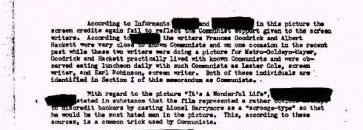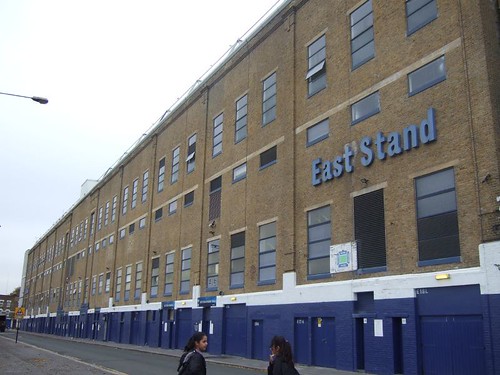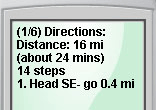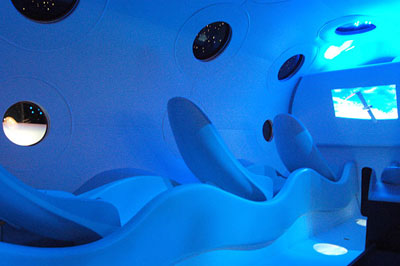I thought I would recommend, strongly, a read of a bleak, but fascinating new policy paper on the future of the European military.

Britain is balancing between the EU and Nato
The thing is the work of a newish defence procurement agency for the EU – the European Defence Agency – and you may be less than surprised to learn that having decided the future looks very bleak, the EDA’s solution is lots of harmonised defence procurement and research spending, to be channeled through the, um, EDA.
Leaving aside that fairly typical piece of Brussels self-actualisation (to use the psychiatrists’ term), the paper itself is amazingly blunt about how weak Europe may be in the future.
Its most dramatic prediction is that traditional ideas of “victory” have to be jettisoned in favour of limited, multi-national campaigns to restore “stability” to conflict zones, with the grudging consent of an ageing, ever more casualty-averse European population.
The paper, entitled: “An Initial Long-Term Vision for European Defence Capability and Capacity Needs”, paints a vision of Europe in 20 years time, in which plunging fertility rates leave militaries struggling to recruit young men and women of fighting age, at a time when national budgets will be under unprecedented strain to pay for greying populations.
At the same time, increasingly cautious voters and politicians may be unwilling to contemplate casualties, or “potentially controversial interventions abroad - in particular interventions in regions from where large numbers of immigrants have come.”
Voters will also be insistent on having UN backing for operations, and on crafting large coalitions of EU member states with a heavy involvement of civilian agencies, and not just fighting units, the paper suggests. They will also want military operations to be environmentally friendly, where possible.
All these changes may drive a wedge between the United States and Europe, creating a “characteristically European approach”, which is “different in ambition and character” from a US vision of war-fighting, with for example, a stronger emphasis on “civil-military interoperability”.
This European approach can be “nested within NATO conceptual frameworks and standards”, the paper says, in a nod to the trans-Atlantic alliance which has underpinned European security for decades.
The tone could not be more different from the Bush administration’s talk of fighting for victory in a global war on terror. The paper predicts future European defence and security operations “will be expeditionary, multinational and multi-dimensional, directed at achieving security and stability more than “victory”.”
It gives warning that militaries will have to cope, even more than today, with round the clock media attention.
“In the conduct of war, ever greater attention will be paid to proportion and justification in the application of force, with an increasing tendency to hold individuals responsible for their actions not just at head of state or military commander level but down the command chain. Attention to collateral damage will be ever more acute,” it says.
The paper was drawn up at the invitation of ministers by the EDA, an EU body which exists to push for more common spending and research by different EU defence ministries and industries. Accordingly, the paper’s favoured solution is steady harmonisation of European militaries, ideally using the same equipment, and using intelligence from pooled spy agencies.
“The best form of interoperability for equipments and systems is commonality – using the same kit. This operational perspective matches the defence economic imperative to consolidate the demand side of the European defence equipment market,” the paper says.
It calls for radical cuts to the standing armies of Europe, which currently number two million men and women, though a far smaller number of combat troops. “Approaches include out-sourcing; increased automation (from warships to robots); and reducing superfluous capability (do Europeans between them really need nearly 10.000 main battle tanks, and nearly 3.000 combat aircraft?).”
The overwhelming tone is unremittingly bleak. “The global context is sobering,” it says, predicting a future of demographic and economic decline for Europe, in which EU citizens will have an average age of 45, and will find themselves utterly dependent on the outside world for energy. At the same time, the populations of Africa and the Middle East will be young, crowded into ever larger cities, and bitterly aware of their exclusion from the fruits of globalisation.
America may lose interest in Europe, as well, the paper predicts. “Relatively poorer, older, and more anxious about its security, Europe may also find itself increasingly alone in confronting the problems of a difficult neighbourhood, as the focus of US foreign policy, following economic and geopolitical developments, shifts towards Asia.”
The paper was presented at an informal meeting in Lapland, hosted by Finland, holder of the EU rotating presidency. Ministers endorsed it, but that does not mean they sign up to everything in it. Here is a press release on the ministerial meeting.
Does Britain sign up to this kind of thing? Well, we are happy, I am told, maintaining a balancing act between the EU and the US-led world of Nato. It is too crude a generalization to say Nato is for the wars where people need bombing, and the EU is for the cuddly, hearts and minds stuff, but not by much.
In more formal terms, a Ministry of Defence spokesman told me about the paper: “We see this as a pragmatic view of the future, and an important part of a long term strategic planning process. The UK is comfortable with our position of working with both Nato and the EU.”






 Since we all understand that sleep can basically make or break you, I've pulled a couple of facts from a study by the National Sleep Research Project:
Since we all understand that sleep can basically make or break you, I've pulled a couple of facts from a study by the National Sleep Research Project:


 Stock up on Doritos before New Year's, LA, because there's a man who's planning on rolling and smoking a three foot jay on December 31, which means there are going to be some people with the world's largest case of munchies soon afterwards.
Stock up on Doritos before New Year's, LA, because there's a man who's planning on rolling and smoking a three foot jay on December 31, which means there are going to be some people with the world's largest case of munchies soon afterwards.























